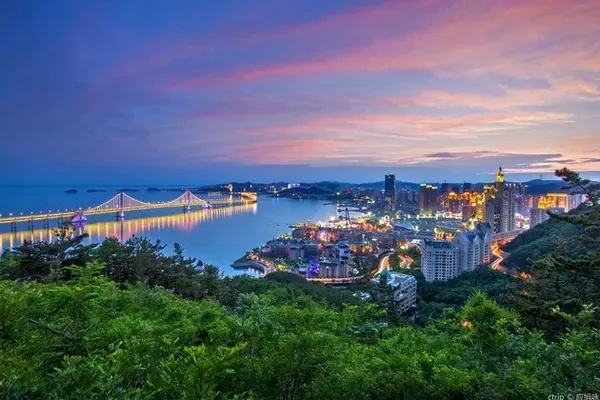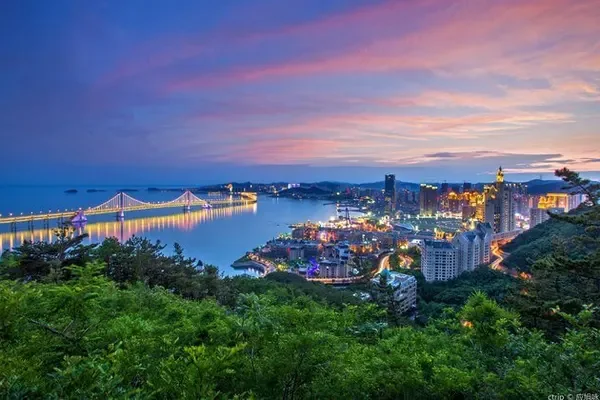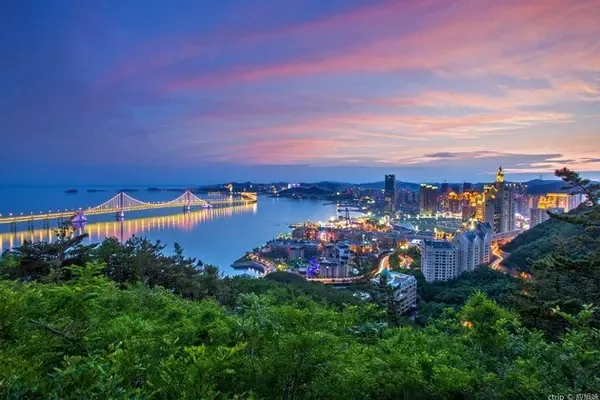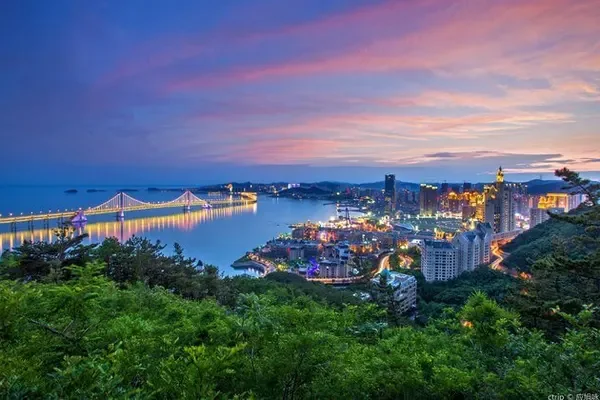I have been to Beijing a few times, but there are too many scenic spots, and I didn’t taste it carefully. Sometimes I was in a group, and sometimes I was a student. It was a rare opportunity to come here again. I had a rest in the morning and started shopping after lunch.

I ate lunch near Jiaomen West Subway Station. It is a bit like home-cooked food. The taste is average, not outstanding, and it is not bad.

The first stop was Prince Gong’s Mansion. It’s a pity that I couldn’t go there last time. I took Line 4 at Jiaomen West and took Exit B of Ping’anli. It takes about 25 minutes by car. The exit is Huguosi Road (if you don’t want to go) Here you can directly transfer to Line 6 to Beihai, which is relatively close), and there are many small restaurants along Huguosi Road, which look very good. Riding a shared bicycle, you can enjoy the street view along the way, and you don’t need to change lines.


There are many ancient buildings on this road, passing the People's Theater, Mei Lanfang's former residence (10 yuan ticket, did not enter in a hurry), Qingwang's Mansion (it seems to have become an office), Beijing Normal University, and you can reach Gong The palace.




Tickets for Prince Gong's Mansion are 40 yuan, and you can rent an audio guide for 10 yuan. I thought that after the summer vacation, the flow of people would be less, but it turned out that the popularity is still very strong, and you need to queue up to buy tickets.


Following the flow of people into Prince Gong's Mansion, the wish that was not fulfilled last time was fulfilled this time. The name of Prince Gong’s Mansion comes from the fact that Prince Gong Yixin became the owner of the house, and coming here because of the name, like me, is because of the original owner of this house——He Kun. This is the largest palace in the Qing Dynasty, covering an area of about 60,000 square meters. It is divided into two parts: the mansion and the garden. The layout is exquisite and the style is extraordinary.

Although it was once a lively and extraordinary house, after many years, there is always such a sense of vicissitudes. The palace is divided into two parts: the mansion and the garden. According to reports, when He Kun built this house, many things were built with royal buildings. The luxury is amazing, but after many years, the loss of many things can only be seen roughly, and many indoor things no longer exist. .



"The Crescent River surrounds the house like a dragon, and the west mountain looks like a tiger crouching in the distance", this is the description of Prince Gong's Mansion in the history books. The ancients used water as wealth, and "water is everywhere" in Prince Gong's mansion. The water in the largest Huxin Pavilion was imported from Yuquan Lake, and it only flows in and does not flow out. This place is really a treasure of geomantic omen. (Source Baidu)

The mansion building is divided into east, middle and west roads, and each road is composed of multi-entry courtyards running through a strict central axis from south to north. The main buildings on the middle road are the Yin'an Hall and the Jiale Hall. The roofs of the halls are made of green glazed tiles, which shows the majesty of the middle road and also reflects the identity of the prince. The main building in the front yard on the East Road is called Duofuxuan. In front of the hall, there is a vine that has grown for more than two hundred years. It is still growing very well, which is extremely rare in the capital. The main building in the backward courtyard on the East Road is called "Ledao Hall", which was the living place of Prince Gong Yixin. The courtyards on West Road are relatively small and exquisite, and the main buildings are Baoguang Room and Xijinzhai. The masterpiece is the magnificent Xijinzhai. There are beautifully carved nanmu partitions in the hall, which are Heshen imitating the style of the Ningshou Palace in the Forbidden City (this is Heshen's extravagance and excess, and it is the "twenty years" that he was given to die. "One of the Great Sins"). In the deepest part of the mansion, there is a two-story back building, which is 156 meters long from east to west. There are 88 windows in the back wall, and there are 108 rooms in it, commonly known as "99 and a half rooms". (Source Baidu)

The palace has five gates, seven main halls, five back halls, seven back sleeping halls, and side halls on the left and right. The mansion is not only spacious, but also has the highest building scale among the royal mansions.

After visiting the mansion, I came to the garden. In front of a western gate in the garden, I heard the tour guide being introduced. This is one of He Kun's 24 crimes. This Western Gate is imitated from the Western Gate of Wanshou Garden in Yuanming Garden. The only complete Western Gate is made of white marble.

Walking through the Western Gate, you will see a rockery, just like Guanyin giving away a child. It is said that He Kun had no children at the beginning.

The pond in front of Sending Avalokitesvara is "Fuchi". Like a pool of bats, surrounded by elm trees whose fruits are like copper coins. Whenever the coins-like fruit fell into the Fuchi, He Shen would say: "The money that falls from the sky enters my 'cornucopia', and the money on the ground also flows into my He Shen's pouch." It's really an image.


On the promenade next to Fuchi, there are a total of 999 bats on it, one of which is Duofu. Turning around from here, this is the location of the "Fu character stele", the treasure of the town garden in Prince Gong's mansion - Miyun Cave. Now you need to queue up to enter the Miyun Cave, which is to appreciate the stele of blessing carved by Emperor Kangxi's imperial brush. It's a pity that there are many people, and the inside is very dark. With a quick glance, it is impossible to see clearly, and it is separated by glass, so you can only see an outline. The tour guide said that from the original characters, you can see the words Tada, Duozi, Duocai, Duoshou, etc., which are very magical characters.


You can stroll slowly in this garden, it is very large, and you can enjoy this artificial lake. There are three water pavilions in the middle of the pavilion in the middle of the lake, called "Poetry and Painting Boat". It's a bit like the feeling of a water town in the south of the Yangtze River, very artistic.



If you come here without an explanation, in fact, what you see is at a loss. Sincerity is big, and there are too many people. I don’t want to continue when I’m tired of taking pictures. I just looked at it roughly, but it’s still not detailed enough. Many rooms are closed and can’t be seen. Inside, some were changed to commercial use, which was a little disappointing.


After walking out of Prince Kung’s Mansion, it’s still early, so I went to the nearby Beihai Park for a walk. Those who haven’t done the strategy don’t know how big Beihai Park is. It’s getting late. Enter from the north gate, go east and then exit from the south gate.


The lotus in summer has begun to slowly bloom and fade, and the leaves are yellow. The luck is not bad. There are a few lotus blooming in full bloom. From the bridge, you can go to the famous scenic spot of Beihai, the White Pagoda. When passing the Zhizhu Temple, I ran into a girl who was taking a photo. , It really has a classic charm.



Due to time constraints, I didn't approach the White Tower, so I walked around and left in a hurry, looking forward to seeing you next time.


Come down from the White Tower, go out from the south gate, and take pictures of the turrets on the periphery of the Forbidden City. The Forbidden City in the evening has a mysterious atmosphere, go to Jingshan Park to overlook it.

When the sun is about to set, climb to the highest point of Jingshan Mountain, and you can see the panoramic view of the Forbidden City and the White Tower in Beihai Park under the sunset. Jingshan Park is very close to Beihai Park and the Forbidden City. There are three gates in total. The south gate is opposite to the Shenwu Gate of the Forbidden City, only one road away.

Jingshan has been an important part of the imperial palace since the Yuan Dynasty, and its scale was built according to the specifications of the imperial palace, with a high level. Jingshan used to be called "Long Live Mountain" and "Mei Mountain"...It was built with earth in the Ming Dynasty and was once the commanding height of the whole city.

After entering through the gate, you can see the Qiwang Tower, which is built against the mountain. In the evening, there are local people dancing here, blending with the scenery. It was a little late to come here, in order to catch the sunset, I rushed from the steps to the highest point - Wanchun Pavilion.

There are already a lot of people in Wanchun Pavilion at this time, waiting for the sunset here, but unfortunately the weather is not strong, the gray sky makes it impossible to take the most beautiful panorama of the Forbidden City, but it is also very good to enjoy it here. People feel comfortable physically and mentally.

Go south to see the Forbidden City, go west to see the White Pagoda of the North Sea, and go to the north... I found this place is really a beautiful place, with different colors in four seasons. It has not yet entered autumn, but autumn colors have already been discovered.


Jingshan is also the place where Ming Sizong Zhu Youjian hanged to death. There is an old pagoda tree that is said to be the place where Zhu Youjian hanged S at that time. It was a bit too sad, so I didn’t take pictures.

Coming out of Jingshan Park, I rode a shared bicycle to the lively Nanluo Ancient Alley. I went there with a group a few years ago, and I always wanted to walk around this time.

The Nanluo Ancient Alley at night is too lively, just like Zengcuo'an in Xiamen, it lacks a sense of simplicity, and the interest is lost before the end of an alley.


Give up and continue shopping as much as you want, and take the subway back. There are too many scenic spots in Beijing, and too many good things to visit. You need to calm down and go shopping slowly.




